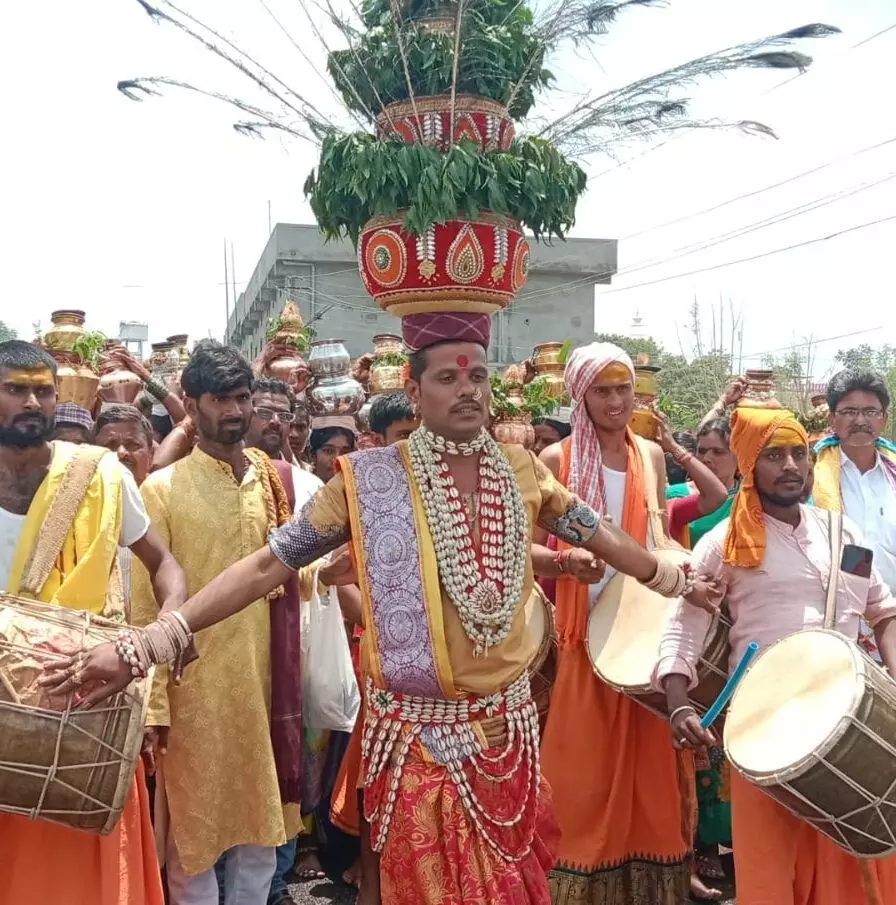Manjeera Kumbha: Three lakh pilgrims to attend only South Indian Mela
This 12-day Manjeera Kumbha mela will be held from April 24 to May 5
By - CR Gowri Shanker |
Sangareddy: Manjeera Garuda Ganga Poorna Kumbha Mela began with religious fervor at Sri Siddi Saraswathi Kshetram in Raghavapur village in Nyalkal Mandal of Sangareddy district in Telangana on Monday.
The 12-day Manjeera Kumbha mela attracts pilgrims from not only Telangana and Andhra Pradesh but also the neighboring Karnataka and Maharashtra besides Naga Sadhus and other Sadhus from North India.
Manjeera Kumbha Mela was first organized in 2010 by Panchavati Kshetra Seer Kasinath Baba, followed by in 2013 and 2018. But due to Covid, it was put off and is held after a gap of 5 years.
This 12-day Manjeera Kumbha mela will be held from April 24 to May 5. Manjeera Kumbh Mela is the only one to be held in South India.
Panchavati Kshetram Peethadhi Kashinath Babu hoisted the festival flag and took a dip in the holy river along with other devotees to launch the Manjeera Kumbha Mela.
As part of the ritual, Ganga Aarthi is offered to Manjeera River every day in the evening.
Bidar Shiva Kumar Swamy, Zaheerabad and Narayankhed MLAs K Manik Rao, M Bhupal Reddy, Sangareddy District Collector A Sharath, DCMS chairman Malkapuram Shiva Kumar and others participated in the inaugural program on Monday. Health and Finance Minister T Harish Rao will attend the Kumbha Mela on April 28.
According to Panchavati Kasinath Baba, about three lakh devotees will attend the Kumbha Mela.
District Cooperative and Marketing Society (DCMS) Malkapuram Shiva Kumar told Newsmeter that all arrangements have been made for the Manjeera Kumbha Mela. Transport and, medicare arrangements have also been made for the devotees.
Manjeera is a tributary of Godavari, which originates in Balaghat range in Maharashtra, very close to Gavalwadi village in Beed District. The river travels 724 km in Maharashtra, Karnataka, and Telangana States before reaching Godavari River downstream of Nizam Sagar. It enters Telangana at Gauda Gav.
Hindus celebrate Kumbha Mela four times in a span of 12 years—the site rotating between four pilgrimage places on sacred rivers like Haridwar on Ganga River, Ujjain on the Shipra, Nashik on Godavari River, and Prayag Raj on the confluence of Ganga and Jamuna and Saraswathi. Each celebration is based on the planetary position of the Sun, Moon, and Jupiter decided by pundits.
According to history, Kumbha Mela’s origin began in the 8th century when philosopher Shankara organized regular gatherings while in Puranas it is said Gods and demons fought over the pot (Kumbha) of Amrit, the elixir of immortality produced by their joint churning of the milky ocean.
It is believed, drops of the elixir fell on the Kumbha Mela’s four earthly sites, and the rivers are believed to turn back into that primordial nectar giving devotees to bathe in the essence of purity. Kumbh comes from this mythic pot of elixir.